I have chosen these two artists, Larry Sultan and Ray Billingham because after looking at Billingham’s photobook, Ray’s A Laugh, I was instantly drawn to his work, in an emotional sense. I found his work very powerful and I think that it really told a story of his life and his background, consisting of his parents. In his book, he told a narrative of how his parents live and through the images, he depicted this is as very obstructive to the lives of the people around them – as if the way his parents live have affected him and his brother having to grow up with it. Both Billingham’s parents have an addiction of some sort – his father being a very heavy alcoholic and his mum being very reliant on cigarettes. He told a story through snap-shots of the conditions they live in on a daily basis in their council estate in a flat. The style of Billingham’s work really resonated with me and I found it very captivating to the see evident boundary that splits the two lives of Billingham’s parents and Larry Sultan’s parents who love, what seems like, very luxurious lives looking at the way they dress, eat and live within their home – Billingham’s family life looks very insignificant when put together with that of Sultan’s and the two contrast makes it very satisfying to notice differences and infer these differences to draw conclusions.
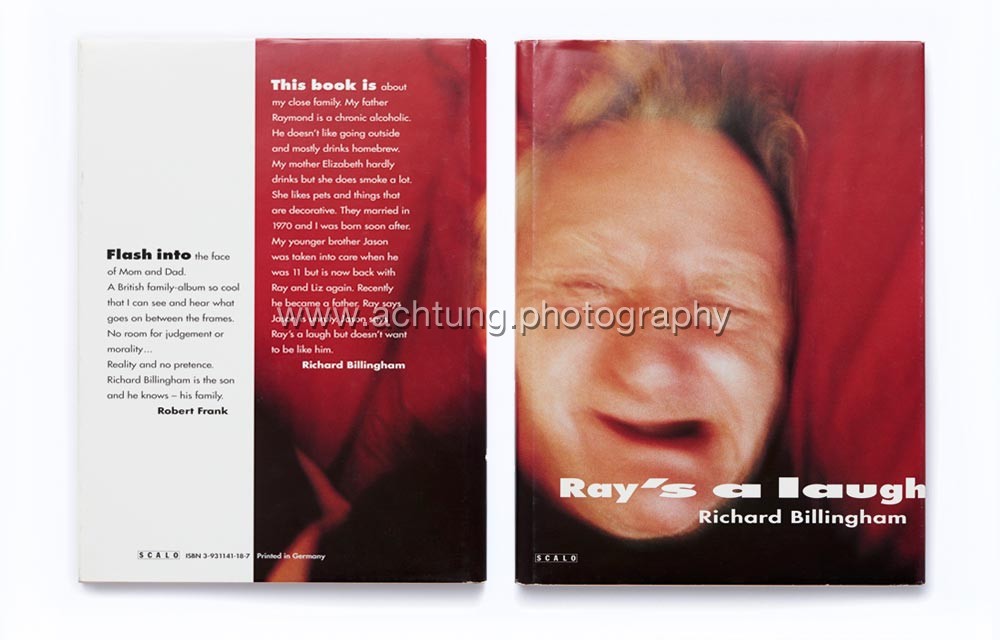
Both artists have taken a documentary approach in their series of works. They have both set out to document and produce a catalogue of images that depict their family lives in order for the audience to either sympathise with the photographer as they photograph a subject close to their heart that has a effected them, or to sympathise with the subjects of the images, in Billingham’s case. However, Sultan’s purpose out of his series, ‘Pictures from Home’ is to give the audience an insight into the lives his parents leads. He doesn’t wish to tell as much of a story for his viewers to question him about, like Billingham but a pendant for his parents. He says “it has more to do with love than sociology”. He used his photography to provide something that will last a life time for his parents.
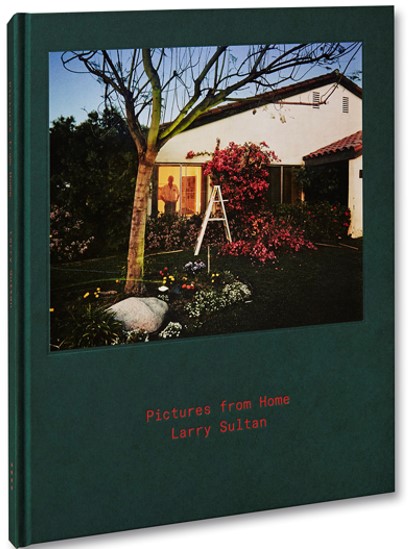
Larry Sultan
Larry Sultan was an American photographer from California and was a very influential photographer for many reasons and he definitely shaped photography for others who would follow, following his sudden death in 2009 at the age 63. During his active time as a photographer he carried out many series which were described as, like he was, very guarded, sincere and seductive. He was a great success and this was evident from his teaching career at the San Francisco Art Institute for 10 years. His dedication to photography earned him the Guggenheim Fellowship, an award dedicated to those “who have demonstrated exceptional capacity for productive scholarship or exceptional creative ability in the arts”. and he also had his work exhibited in museums of the United States.
With regards to his series, ‘Pictures from Home’, this was something he worked on for nearly 10 decades. ‘Time’ website writes, it is, in some sense, an aggregate of mini-collections: Sultan’s aging parents, stills from old home movies, transcribed interviews with his parents, and family snapshots appear side by side, creating a quiet but profoundly stirring portrait of familial intimacy. What makes Sultan’s family photobook different from the countless other artists who attempts it is the such intimacy that is delivered through the pages which touch the reader. He alternates between past and present in the book and puts together a collective that holds personal meanings through the use images and text which engages with class, memory and physical and emotional beings.
A Collection of Images from the Book





One thing I admire about Sultan’s images is the colours he captures from each image. I believe this in mainly due to the décor that his parents house possessed. It is obvious from the colours, bright and eccentric, that his parents house was luxurious for the them. An image that is evident of this is the image where his mother and father are both in the lounge/dining room together and they have bright green walls surrounding them as well bright green carpet underneath them.

Artist Analysis
This sort of image reminds you of the retro rooms you see in houses of vintage films. It is very 70s but to the luxury we see here in comparison to Ray Billingham’s council flat was a novelty to them.
Relating this image to documentary and the functions and features of documentary photography, it is very clear to see that this particular (above) plays the role of a source of imagery that simply documents what goes on the household of the Sultan’s during the time taken. From looking at the image, I get the sense that Larry Sultan has simply held his camera to his eye in this position he found himself in what seems to be the lounge and, like the style suggests, snaps this one second in time which features his mother and father conversing with each other. The composition is very basic and Sultan would have intended to frame both his parents in the shot in order for the audience to get a sense of their day-to-day lives which consists of relaxing at home and enjoying the company of one another. You can see that the image is slightly slanted and is not completely straight but this adds a likable amateur look to the photograph.
I would imagine that his parents would not have been expecting Sultan to take this image at the time; they would have been going about their evening normally and it is very unlikely that this scene is staged, like a tableau because the whole point of documentary imagery is to capture the lives of ordinary people, most of the time, when they are not watching or expecting it. This is what makes the image above so captivating because you, as the viewer feel as though you are a fly on the wall and are supposed to be viewing inside these strangers lives – documentary photography, in some ways is a means of being nosy and intrusive of other lives – something I find very enthralling when I come to producing my own.
Something I have noticed about the photo, which I really enjoy and think is perhaps an unintentional addition to the photo is the way Sultan’s parents are sat apart from each but there is a empty chair in the middle of them. His mother is on the sofa and his father is at the dining table with his wine glass, seeming as though they have just finished their evening meal and the lady of the house has gone for a sit down. Sultan has captured the scene from his point of view where on one side is his mum and the other his dad, but in the middle of the two is a lonesome chair with no one occupying it. The chair is facing the camera and for someone who would be sitting in it, they would be looking straight at the camera, however, his mother is looking towards her husband and this empty space in the middle seems quite disconcerting and unnerving for the viewer. It’s as though they are waiting for a presence to come along or there is this invisible presence splitting the two. Looking at the facial expressions of the subjects. they are looking quite dull with no emotion, perhaps they have just had a row.
Sultan on hs website in his statement about the series comments on how the works are more about love and it is about showing this familiarity of love in families and the members within them and the relationships which are held. He says he wants his parents to live forever and this is a dedication to them. This is has allowed him to construct his series very thoughtfully in order for it to be a time-travelling tool to relive history that would have passed.
In the series, the boundary between documentary and the staged is blurred as Sultan includes efforts to position his mum and dad in positions and poses fro the camera at times but at other points, the format of images is so very informal and relaxed like inn the above where there is no thoughts of showing any emotion for the camera. The reality of living normal lives without presenting anything false for the camera is backed up by the clutter that lies around on the table and on the side unit.

Ray Billingham
and artist comparison
Richard Billingham, you could say is completely on the other end of the spectrum to Larry Sultan in the way his parents live and in the message that Billingham wanted to force through to the viewers of his series ‘Ray’s A Laugh’. His parents led completely different lives of that of Sultan’s and it is evident in this very captivating catalogue of works for may different reasons compared to Sultan’s. Billingham as a photographer has become a household name for documentary photography and he received lots of reception, mostly positive about the way he addressed the topic of alcoholism in his father and audiences, including myself have loved looking through his published book about the state of which his parents lived in their council flat. He said ‘I just hated growing up in that tower block’ and this is what spurred him to photograph it. The Guardian Online published an article about the series and wrote ‘The photographer was a pioneer of ‘squalid realism’ with his images of his parents’ dreary, drunken existence in the Black Country, which won him a Turner prize nomination. Now, with the help of ‘White Dee’, he’s turning their life into a feature film’.
* Squalid / (of a place) extremely dirty and unpleasant, especially as a result of poverty or neglect.
Richard Billingham had a very touch upbringing and I believe this is what contributes to us as the audience being able to sympathise with him in terms of the way he was brought up, yet he still manages to capture a series so beautiful in it’s narrative. The brief of his teenage years goes as follows: he didn’t even take a photograph until he was nineteen. This was when he was living with his alcoholic father, Ray in flat on the seventh floor of a council block in Birmingham. He’d actually just begun an art foundation course at Bourneville College and was working every night to pay his way stacking shelves at the local Kwik Save supermarket, as ‘The Guardian’ writes.
The first pictures Billingham took, with a camera bought on credit after he persuaded the shop assistant he was a librarian, were of geese and ducks in the park, “just to see if they would come out”. He then trained his viewfinder on Ray. (words from The Guardian). He also said that the pictures he took of his dad were rare and that the film cameras he used own were to expensive to develop. This suggest that maybe Billingham always wanted to get into photography was always eager to be creative but never had the chance due to the circumstances he and his family were in. This series he produced could maybe have been a compensation for the times lost when he was younger as he watched over his mother and father physical and mental state deteriorate – a conclusion I can draw just from looking at the photographs included in the book as you see his mother and father slouch on the sofa eating their dinner with food-stained clothes and junk food packaging strewn across the grim carpet.
A Collection of Images from the Book
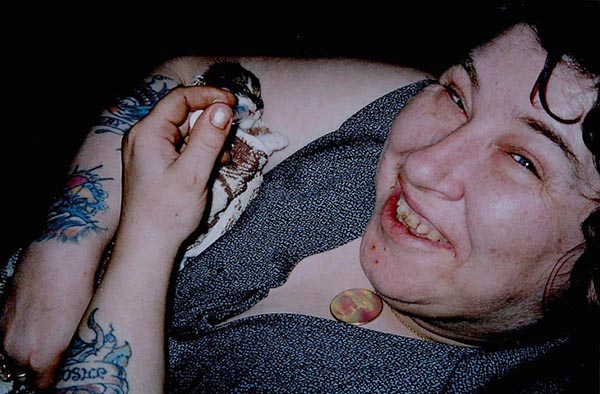
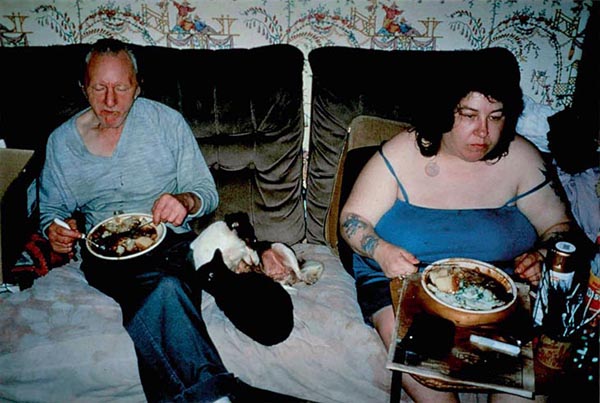
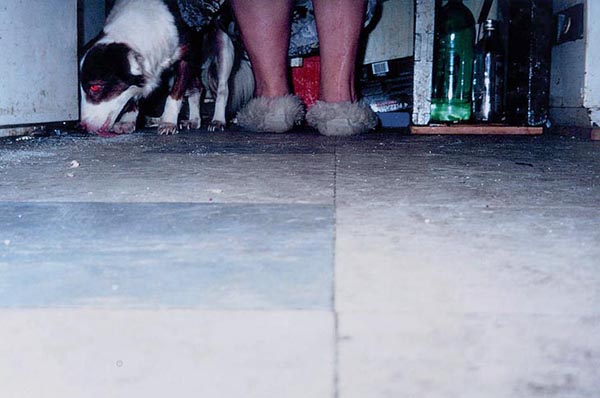
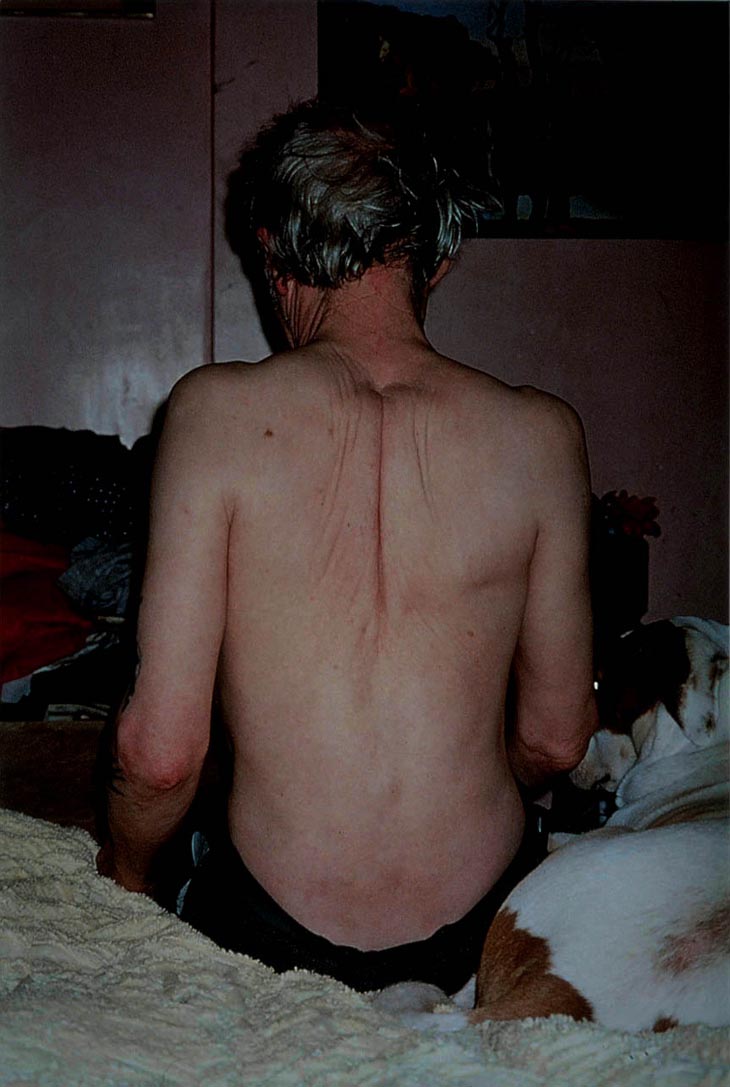
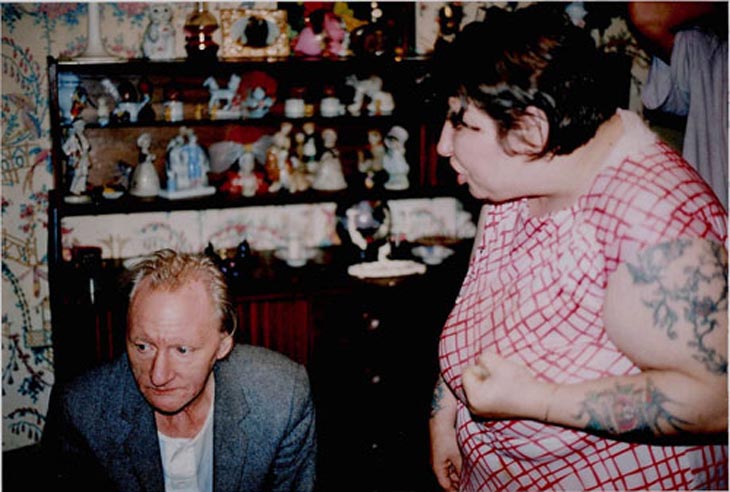
There is something about the images that I see in this collection by Richard Billingham that makes me feel very uncomfortable and on edge to look through them because I can sense, just by looking at the images that the tension within the house of the Billingham’s would have been very unpleasant to witness, especially between the two parental figures, who seem to be the most vulnerable yet should be the ones with their loving eye gazing over their sons yet, in the image above, it looks like the mother has her fist up at Ray’s face mid-way through a row. The facial expressions from both halves portray a sense of anger yet regret or upset. However, as much as it is not pleasant to observe the events that occur in the images, it is essential to do as it opens your eyes to the reality – once again – this is what documentary is; reality being forced directly to the viewer. I feel very connected when analysing the events that occur in the images because each photo has a meaning behind it, a story – this is a similarity between Billingham and Sultan, that each image represents a moment in time and that the collection of photo produced tell a story. Looking at the two contrasts re-defines the meaning of family as I am being told about two different situations – one of love and one of agitation.
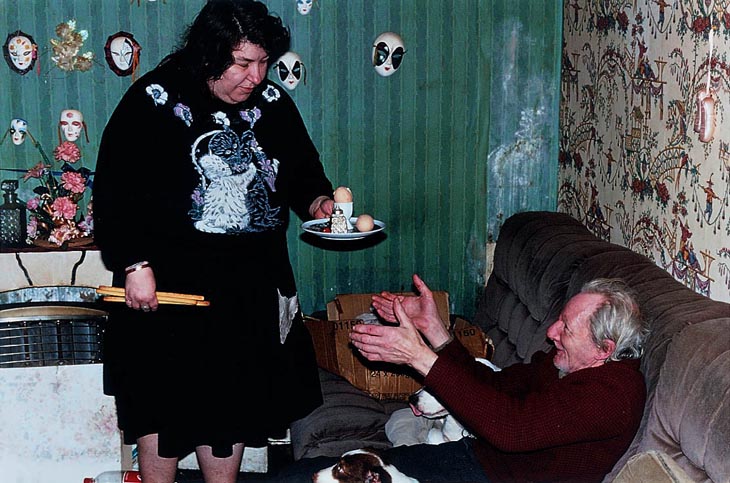
Artist Analysis
This image, to me holds a very strong and powerful message as it sums up the whole meaning behind the series, ‘Ray’s A Laugh’. It shows Ray’s wife bringing him his dinner, which looks like two boiled eggs and some toast. The simplicity of the dinner reiterates their need for simplicity and being basic in their life choices. It shows Ray sitting don on the sofa with his dogs and his wife coming over to him with his dinner as conjures up a smile as this moment in the day is probably his favourite. He puts out his hands as his wife looks at him drearily and it is a shot which makes the audience think of family. It is a typical scene of the lady of the house bringing dinner to her man as he relaxes on the sofa ready to enjoy a relaxing evening with his wife. This usually occurs in men who have ben at work all day and women who have spent the day at home cleaning and cooking, however, for these two, it is likely they have spent the day on the sofa and what is seen above is there everyday life – it has the sense of repetitiveness an this is what is ironic because something so simple for Ray is what brings him joy as he probably doesn’t have much else to provide him excitement.
The state of the house is shown by the surroundings. The walls are caked in dirt and grease and filth, there are cardboard boxes with what I can only imagine is junk which has been hoarded over several years. There are cheap-looking decorations hanging off the walls which at ornaments which Billingham’s mother has collected as he claims she loves little knick-knacks. The two subjects themselves don’t look clean and it is though they fit it with their surroundings perfectly and they have become part of the house over-time. The whole look of the image is very sad and the audience can sympathise with what is going on.
The wife is holding in her other hand as she oases over the boiled egg for at some breadsticks which you can only bare to imagine that this could be her dinner as she has had to focus on pleasing her husband. You could draw a conclusion that perhaps if Rau does not get his evening meal, if may get aggressive and retaliate and this prospect because it is breaking his routine. He is an alcoholic and Richard Billingham stresses this as in almost every shot in the series is a greasy recycled bottle filled with a brown, thick liquid said to be the homemade brew his father makes.
I find it hard to believe that Billingham has he courage to construct such a personal visual documentary of images because it is such a personal subject that encapsulates the hardship his parents have been living for the most part of their lives and how it has affected the ones around them, including himself but the context of the series is what makes it so thrilling to view.
His video art piece which re-imagines scenes from his book released in 2000, ‘Ray’s A Laugh’.
